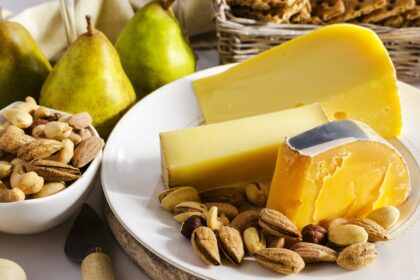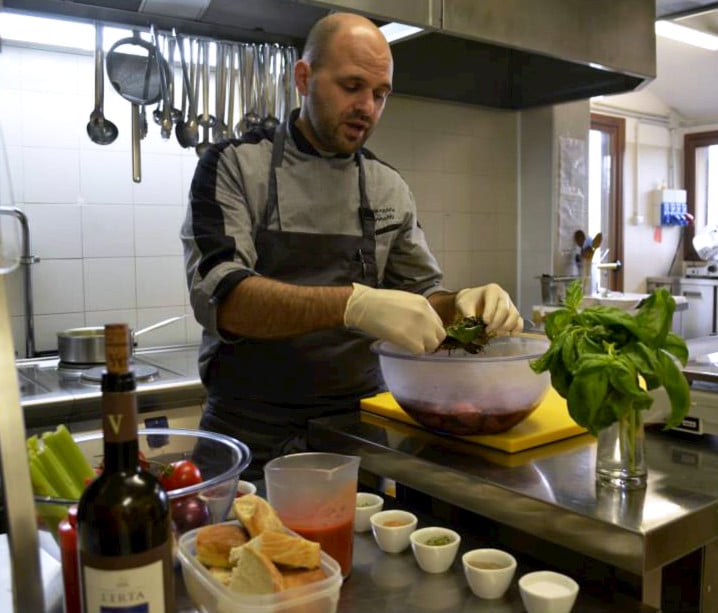
There exists a notion that Italy is a place where time has stood still in terms of tradition; however, the truth is the culinary scene has seen modern advances just like the rest of the world. Italians work long hours and lead busy lives, making it hard to spend hours preparing a meal, while restaurant chefs need the help of kitchen machines to meet high demands. That’s why I was delighted when offered the chance to take a traditional Tuscan cooking class with Chef Francesco Ferretti of Tuscany’s Il Rosmarino at Castelfalfi, who showed me how to make local dishes in the style of his great grandmother.
People love to talk about typical Italian cooking; however, there is no such thing as “regular Italian.” Italy is a relatively young nation, with different regions developing over time and creating their own unique cultures and cuisine. For example, while in Sicily you’ll find a lot of Spanish, Greek and Arab influence, while Piedmont’s many ecosystems allow for the most diverse cuisine in the country. One concept that does exist for all of Italy is the use of fresh, local and natural ingredients with robust herbs and spices that speak for themselves.

The Importance Of Olive Oil
This is especially true for Tuscany, where fertile lands showcase rolling hills dotted with olive trees, vineyards contain endless rows of Sangiovese, mild microclimates allow for an abundance of citrus, lush forests hide prized truffles, and nuts grow as plentifully as grass. In Tuscany, the main ingredient for any dish is olive oil, which is used both raw and when cooking, loved for its superior smooth taste and health benefits. Take a quick look at the smooth-skinned, glossy-haired locals in this region and you’ll immediately see the benefits of the product aren’t just on the palate.
Today under the direction of Chef Francesco I’ll be learning about Tuscan olive oil as well as traditional cooking from a time when all dishes were handmade. On the menu for today’s class are three very popular Tuscan dishes which are also served on the menu at Il Rosmarino: Peposo di Manzo, Pappa al Pomodoro and Cantucci Biscuits.

Peposo di Manzo
We begin with the preparation for the Peposo di Manzo, a beef dish loaded with herbs and spices. The previous night Chef Francesco had left chunks of beef to soak in an infusion of juniper berries, red wine, rosemary, sage, bay leaves and ground pepper, which soak into the meat for added flavor. The dish plays on the quintessential Tuscan ideology that combinations of herbs and spices instead of heavy and refined sauces enhance the flavors of meats in a delicious way that also pays homage to the local landscape. Interestingly, it was during the introduction of new spices to the region in the 12th century when Tuscan cooking really began to evolve, with these spices still serving a base for the cuisine today.
Chef Francesco instructs me on how to properly cut up the celery, onion and carrot — tucking your thumb behind your middle three fingers, which you use to hold the vegetable still with the fingertips tucked under. We use red onion instead of white or yellow, as it contains a slightly spicy yet sweet taste and a fresh essence.
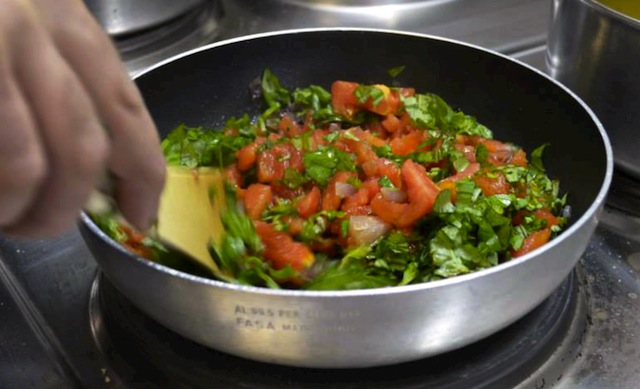
The chopped produce is sauteed in a mixture of garlic and olive oil on the stove. The beef goes into this mixture along with a tantalizing combination of wine, black pepper, salt, lemon peel, tomato, concentrate, cinnamon and nutmeg. This unique recipe allows for every taste bud to get some action, a palate party of zest, spice, sweet, earth and nut.
Because Peposo di Manzo was traditionally cooked over gas, it’s important to slow-cook the meat over low heat to have it taste like the hard work of an Italian grandmother. As the meal calls for muscle meat, it also makes it more tender.

Cantucci Biscuits
We work on the dessert next — the Cantucci Biscuits — as they need to be in the oven for 40 minutes. This dessert first appeared in the 16th century, when Roman soldiers would eat a savory version of them during military campaigns. During the “sugar boom” in the 14th century they started to take a sweet turn, a popular snack in the Medici Court in the 16th century.
For me, this is the most fun recipe I’ve ever encounter, especially for the person cooking. The process begins by making a small fountain of flour, making sure to leave a caldera of sorts to place the other ingredients. In the center, I pour 1 teaspoon vanilla extract, 1 teaspoon baking powder, 300 grams of sugar, a pinch of salt and two eggs. The creation now looks like a flour bowl of soup, which means the fun part of coming up. Fold the outside of the flour fountain to the inside, rolling everything together as if a cake volcano just erupted.
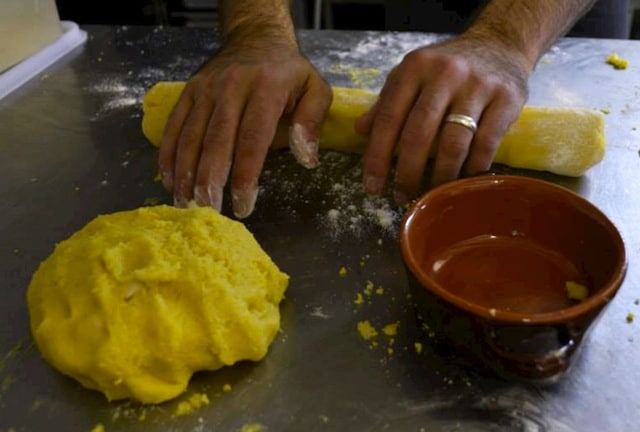
Once the dough is firm and smooth, 125 grams of almonds and 50 grams of butter are placed on top, with the kneading and folding beginning again. While Chef Francesco molds the dough effortlessly, I have much more trouble, almonds hopping off the table like grasshoppers and thick globs of butter sitting in stubborn chunks.
“It’s important to use a lot of strength,” instructs Chef Francesco. “You need to make sure the butter is even throughout the dough.” Then he smiles to himself. “”This is the way my grandmother used to do it. Now most people use machines instead of their hands to make biscuits, breads, dessert and pastas, but I prefer the old-fashioned way.”
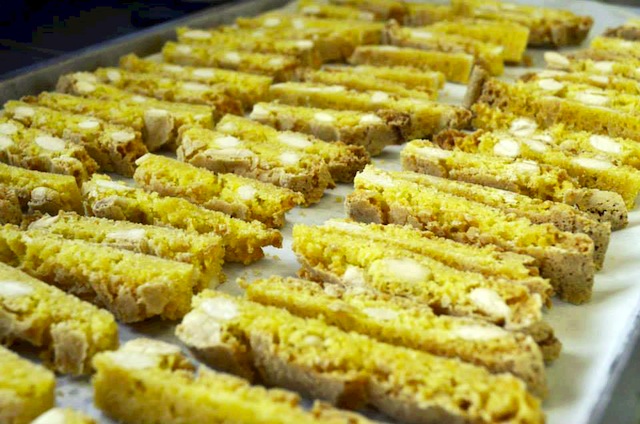
When I’ve finally reached a consistency that can be considered “not too lumpy” and only a few of the almonds are visible from the outside, I mold the dough into a flat loaf-like shape on baking paper — setting a metal spoon on each side to hold down the edges — to be placed in the oven on 160 degrees Celsius (320 Fahrenheit) for 40 minutes.
Nuts in general are an important part of Tuscan cooking, paying homage to the region’s style of peasant cooking. In the Middle Ages, chestnuts in particular were a staple of poor peasants, who would collect and dry them to make flour for baking or to give milk and water a more filling consistency. Today, you’ll find chestnuts, pine nuts, almonds and other healthy and hearty nuts in a variety of Tuscan dishes.
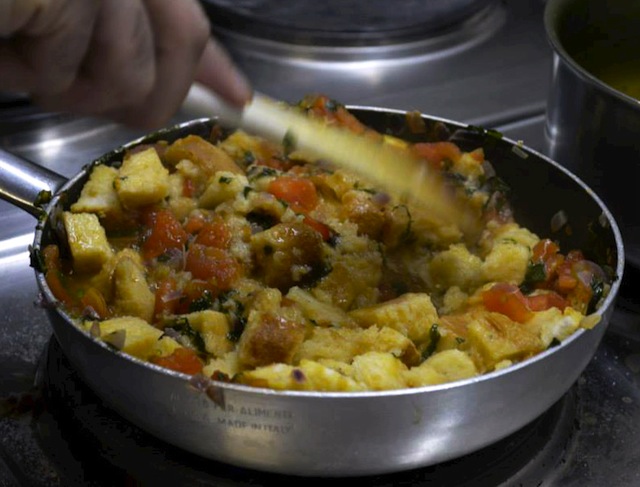
Pappa al Pomodoro
Tuscany’s peasant-style cooking can also be seen through a very typical soup — which, like many soups in Tuscany, is more like a stew or porridge — Pappa al Pomodoro. One of the main ingredients of the meal is stale bread, as the region’s traditional culinary philosophy has always been to waste nothing.
“In the past people who lived in the countryside didn’t have money for extra ingredients,” explains Chef Francesco. “Bread was what was affordable and could be used for many things. It made soups more filling, especially when it soaked up the broth.”
After being cut into small chunks, the stale bread is added to a mixture of sauteed onions and peppers in extra virgin olive oil, stewed tomatoes, tomato paste, vegetable broth and salt. We stew the tomatoes by hand, boiling them for three minutes before shocking them in cold water to easily remove the skin. The seeds are taken out, as they add unnecessary water that can dilute the dish’s intense flavors. Chili is also added for a pinch of heat, while basil leafs give the mixture sweet accents. The goal is to have the bread soak up the liquid while still retaining a slightly firm texture.
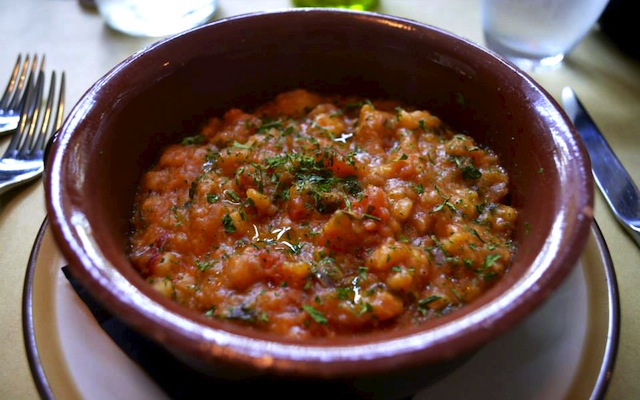
An Immersive Dining Experience
As I sit down to my delicious meal, enjoying Il Rosmarino’s floor-to-ceiling windows allowing for countryside views, I feel as though I’ve stepped back in time. While the Pappa al Pomodoro tastes like a creamy pasta dish, sweet basil blending with a hint of heat from the chili, the Peposo di Manzo reminds me of Christmas with hearty meats and aromas of nutmeg, cinnamon and juniper berries. Then there’s the Cantucci Biscuits, which, dipped in the traditional sweet white Vin Santo wine, is like a delightful adult version of cookies with milk.
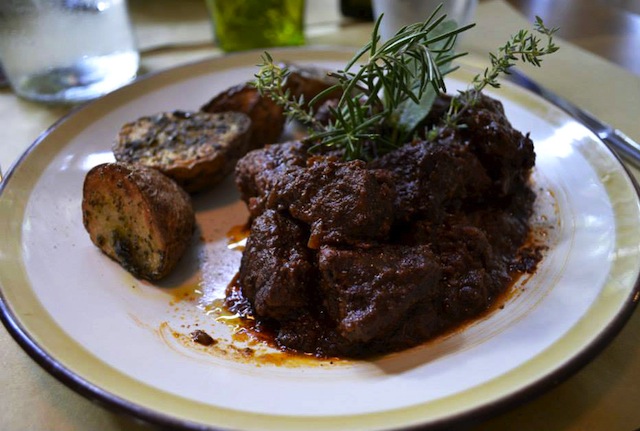
Suddenly, I’m transported to a time when a meal wasn’t just a quick bite or a necessity for fuel, but a social event with laughter, music and the treasuring of health and relationships. And while cooking a meal from scratch may be time consuming, it adds to my appreciation of the local flavors and how they have the ability to give pleasure to both my palate and my life.
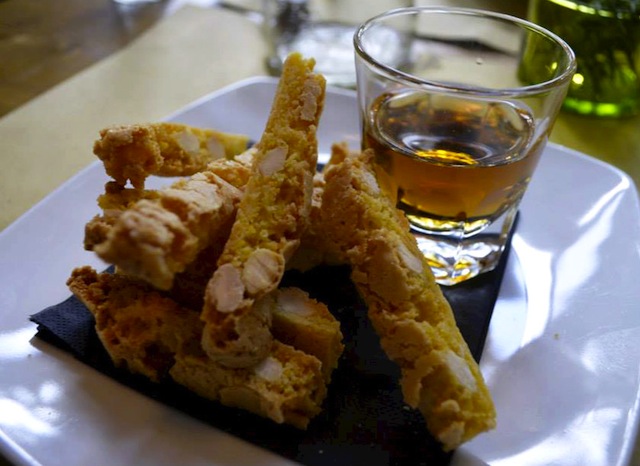
I think 15th-century Italian poet Luigi Pulci said it best when he wrote: “I believe no more in black than in white, but I believe in boiled or roasted capon, and I also believe in butter and beer… but above all I have faith in good wine and believe that he who believes is saved!”
Cooking classes can be taken at Il Rosmarino through their hotel next door, Toscana Resort Castelfalfi, or by emailing [email protected].
About The Author
Jessica Festa is the editor of Epicure & Culture as well as Jessie on a Journey. She enjoys getting lost in new cities and having experiences you don’t read about in guidebooks. Some of her favorite travel experiences have been teaching English in Thailand, trekking her way through South America, backpacking Europe solo, road tripping through Australia, agritouring through Tuscany, and doing orphanage work in Ghana.
Jessica Festa
Latest posts by Jessica Festa (see all)
- A Culturally-Immersive Adventure In Mongolia’s Altai Mountains - Jul 8, 2023
- This Recipe Sharing Platform Supports Women In The Culinary Industry (Labneh Recipe Included!) - Nov 5, 2020
- Hiking The Mohare Danda Community Eco-Trek In Nepal - Jun 3, 2020
- 6 Important Questions For Choosing A Responsible Yoga Retreat - May 18, 2020
- How To Create & Grow A Profitable Blogging Business (Ethically) - Jan 18, 2020




